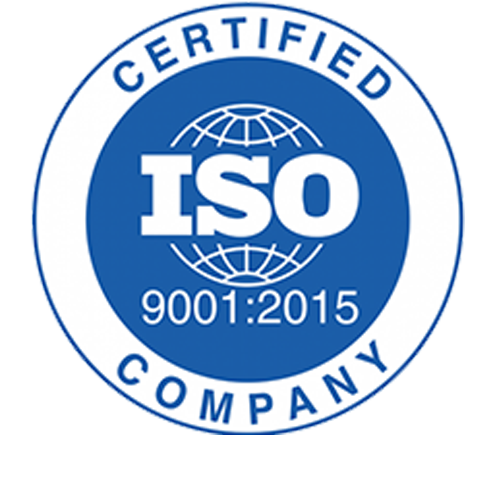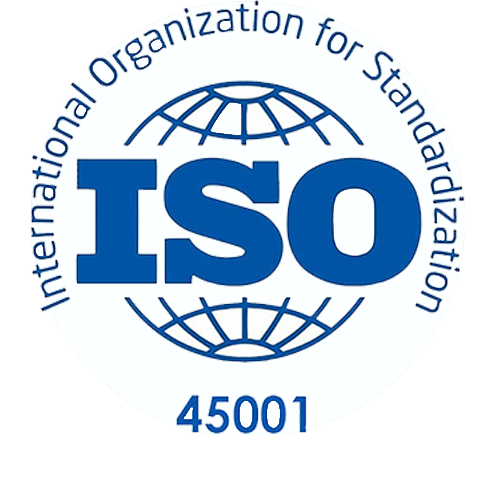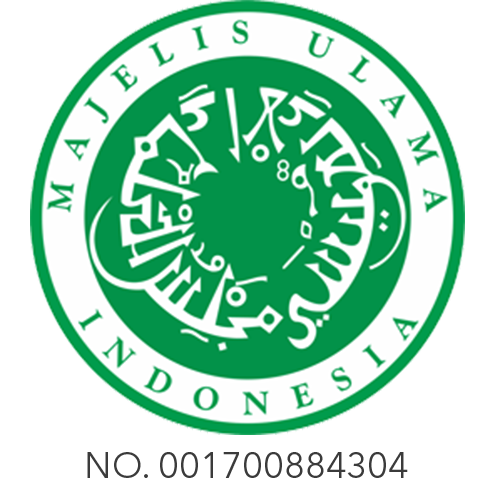>> DOWNLOAD COMPANY PROFILE <<
SEJARAH
-
Diciptakan dan awalnya dikembangkan pada akhir 1980-an di Norwegia
-
800 MBBR dipasang pada tahun 2014 - Tersebar di 50 negara
-
Banyak digunakan karena footprint kecil
Sistem MBBR terdiri dari tangki (mirip dengan tangki lumpur aktif anaerobik dan aerobik) dengan plastic carriers khusus yang menyediakan permukaan tempat biofilm dapat tumbuh.
Solusi ini secara signifikan meningkatkan kapasitas dan efisiensi instalasi pengolahan air limbah yang ada, sambil meminimalkan ukuran pembangunan instalasi baru.
Konstituen Air Limbah dan Unit Operasi dan Proses untuk Pembuangannya
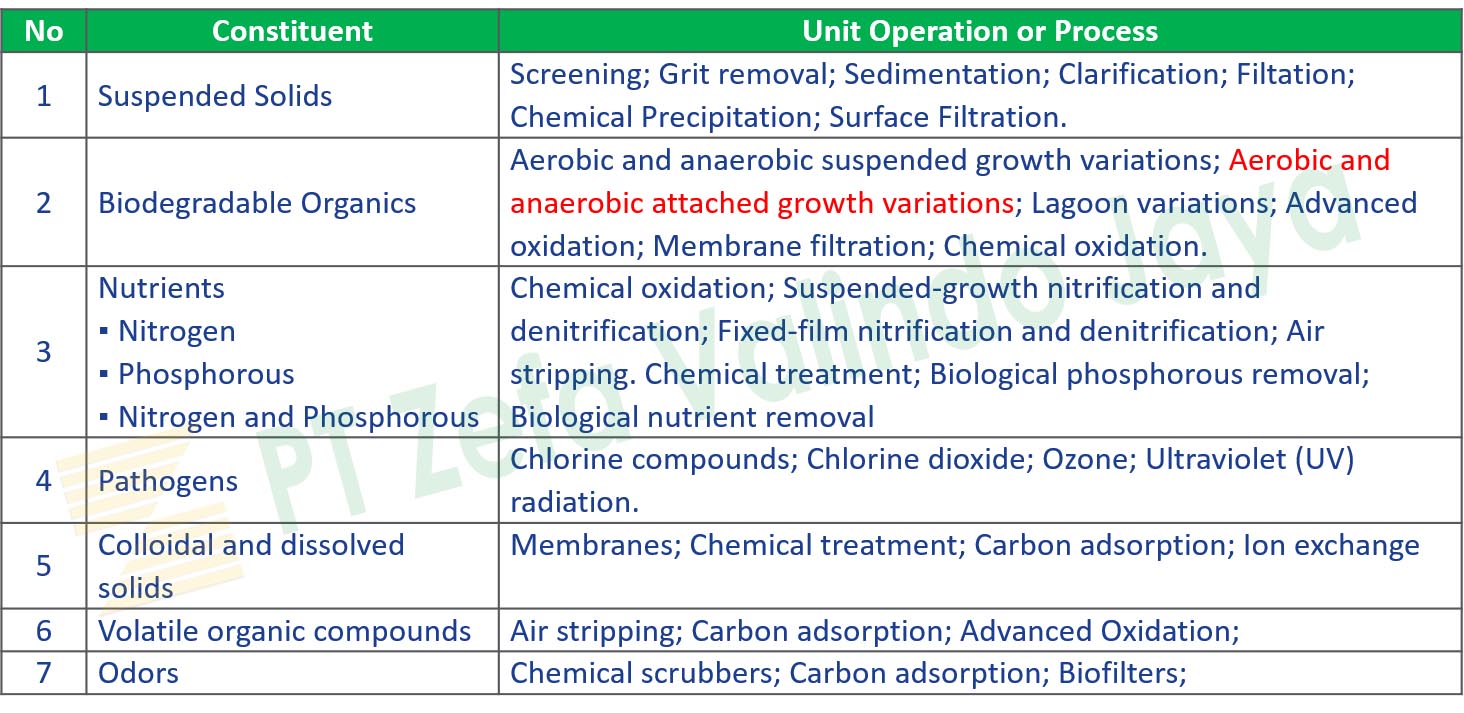
Tidak hanya dapat menghilangkan BOD dan COD tetapi juga dapat melakukan Proses Nitrifikasi dan Denitrifikasi
SISTEM PROSES BIOLOGIS
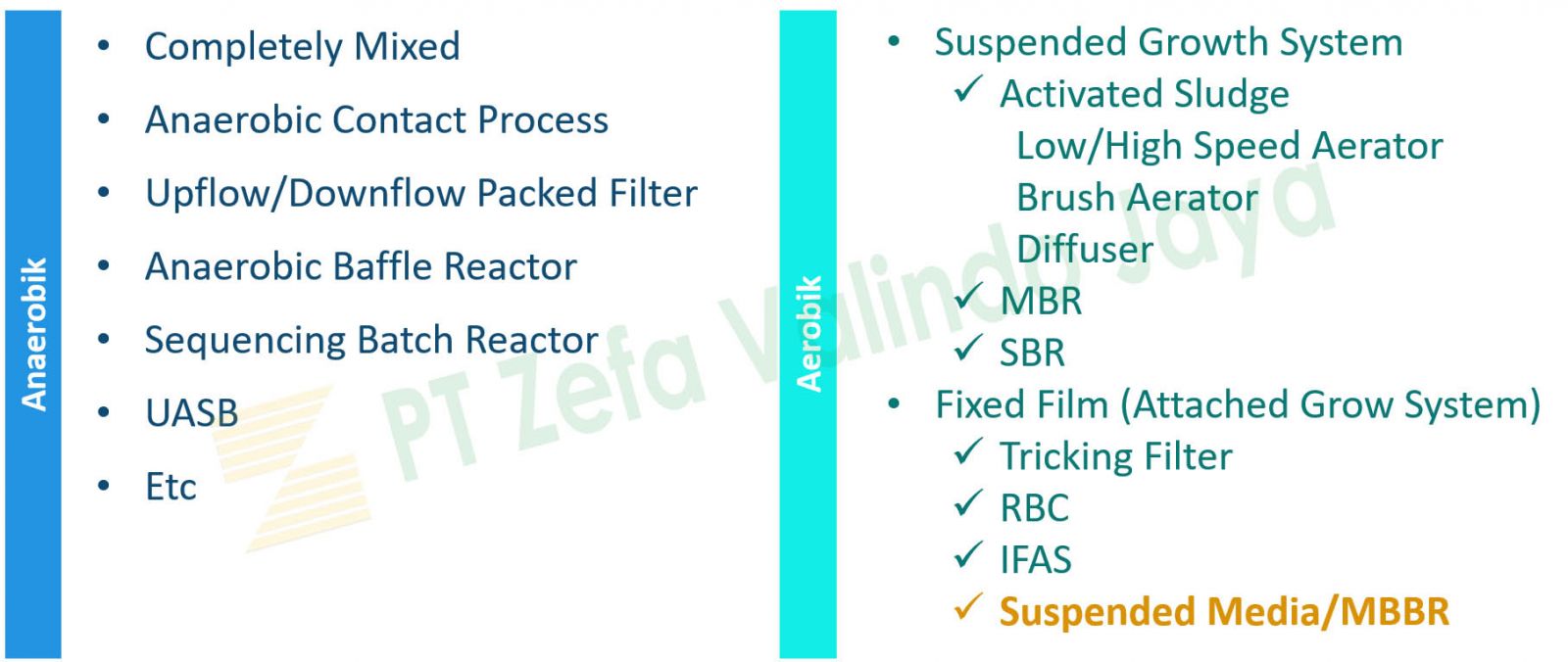
GAMBARAN UMUM
- Menggunakan elemen carrier khusus untuk area permukaan yang lebih besar untuk dikolonisasi oleh bakteri
- Ketika pembawa biofilm berpori tersuspensi terus menerus dicampur dalam tangki aerasi yang dioperasikan, biomassa aktif akan tumbuh menjadi biofilm pada permukaan carrier tersebut.
- Ketebalan biofilm di mantain dan dikendalikan oleh continuous sloughing yang dibuat oleh proses pencampuran aerasi
- Klarifikasi sekunder biasanya digunakan
- Tidak ada lumpur aktif daur ulang yang dikirim kembali ke proses
Komponen Utama MBBR
- Reaktor (Aerobik atau Anoksik)
- Media
- Media Retention Screens
- Baja tahan karat 304L
- Plat Perforasi Silinder atau Plat Perforasi Panel Datar
- Perforated Plate foam control screens
- Aerasi Grid (Aerobik)
- Baja tahan karat 304L
- Gelembung Sedang
- Bebas Perawatan - Tidak ada suku cadang pengganti
- Mixer Kecepatan Lambat (Anaerobik / Anoksik)
- Submersible atau Top entry
- Dapat dikontrol kecepatannya
Faktor Kunci Kinerja
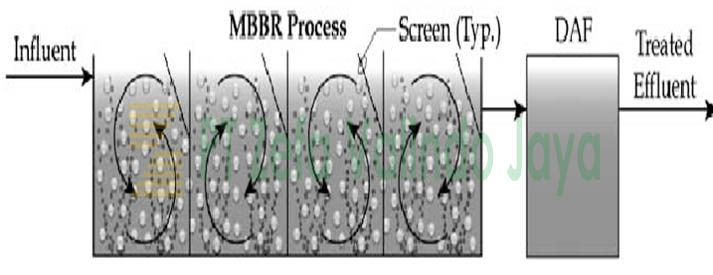
- Area permukaan spesifik carrier MBBR biasanya berkisar antara 350 hingga 1200 m2 / m3
- Rasio kekosongan biasanya berkisar dari 60% hingga 90%
- Persentase pengisian Media / Operator adalah 30-70% (biasanya 40%)
- Parameter desain empiris utama yang digunakan untuk menentukan ukuran tangki MBBR yang dibutuhkan adalah laju pemuatan luas permukaan (SALR) dalam g BOD / m2 / d
REMOVAL AMMONIA dan TOTAL NITROGEN
- Sawit
- Susu
- Daging
- Oleokimia
- Farmasi
- Pupuk
- Tekstil
- Perhotelan
- Kesehatan
PERBANDINGAN MBBR
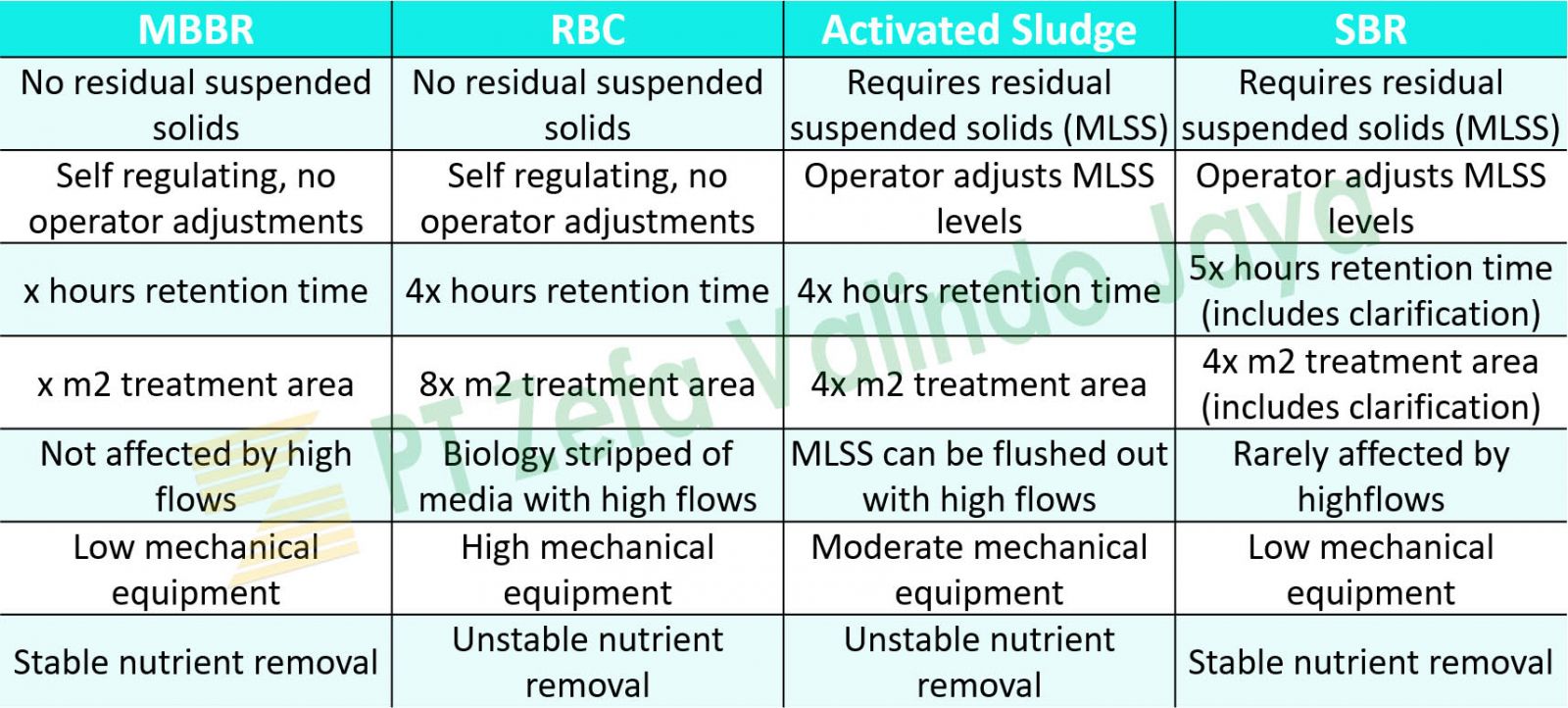
MBBR Alternatif Proses Pengolahan Air Limbah
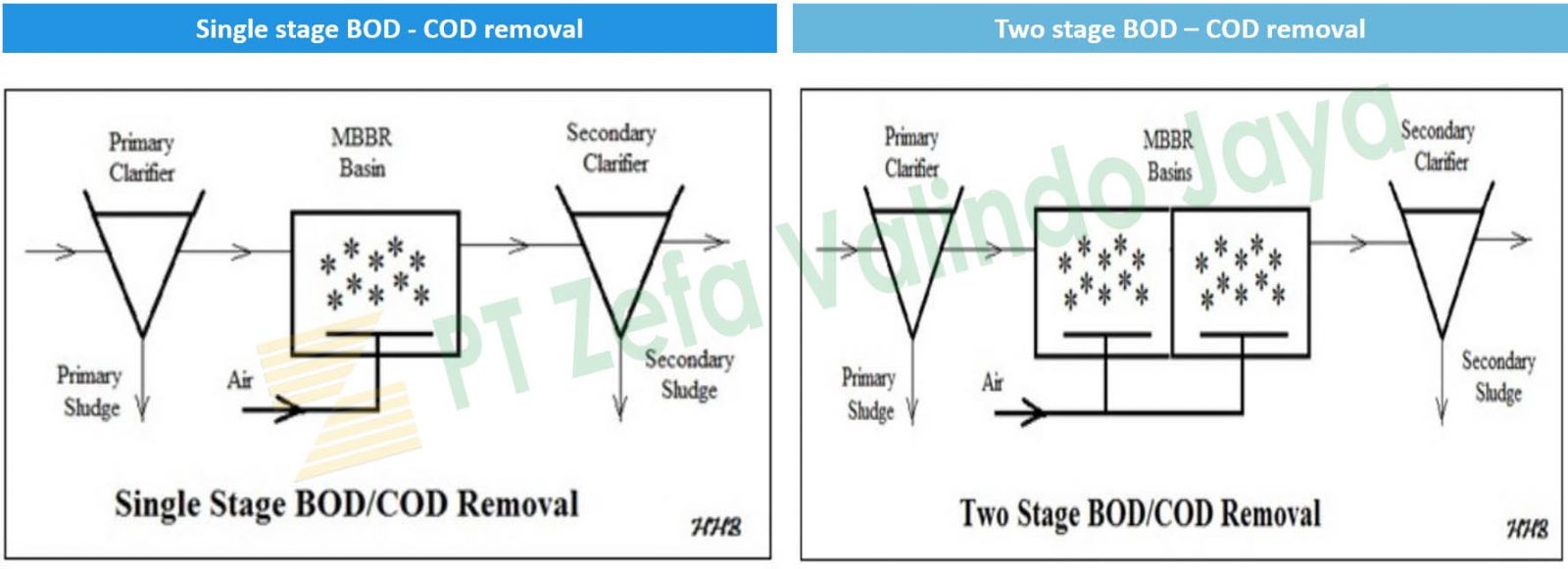
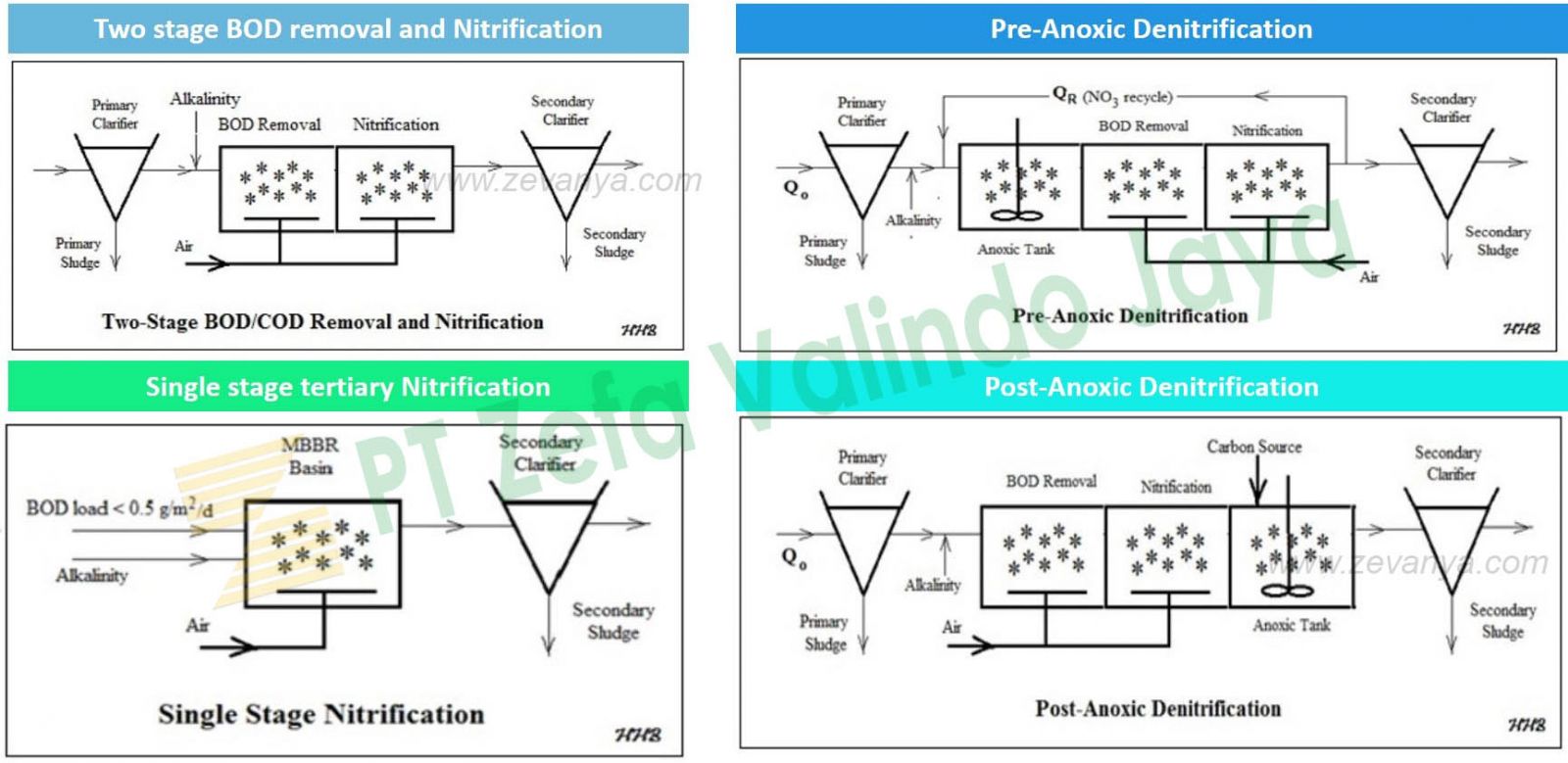
MENGAPA HARUS MBBR?
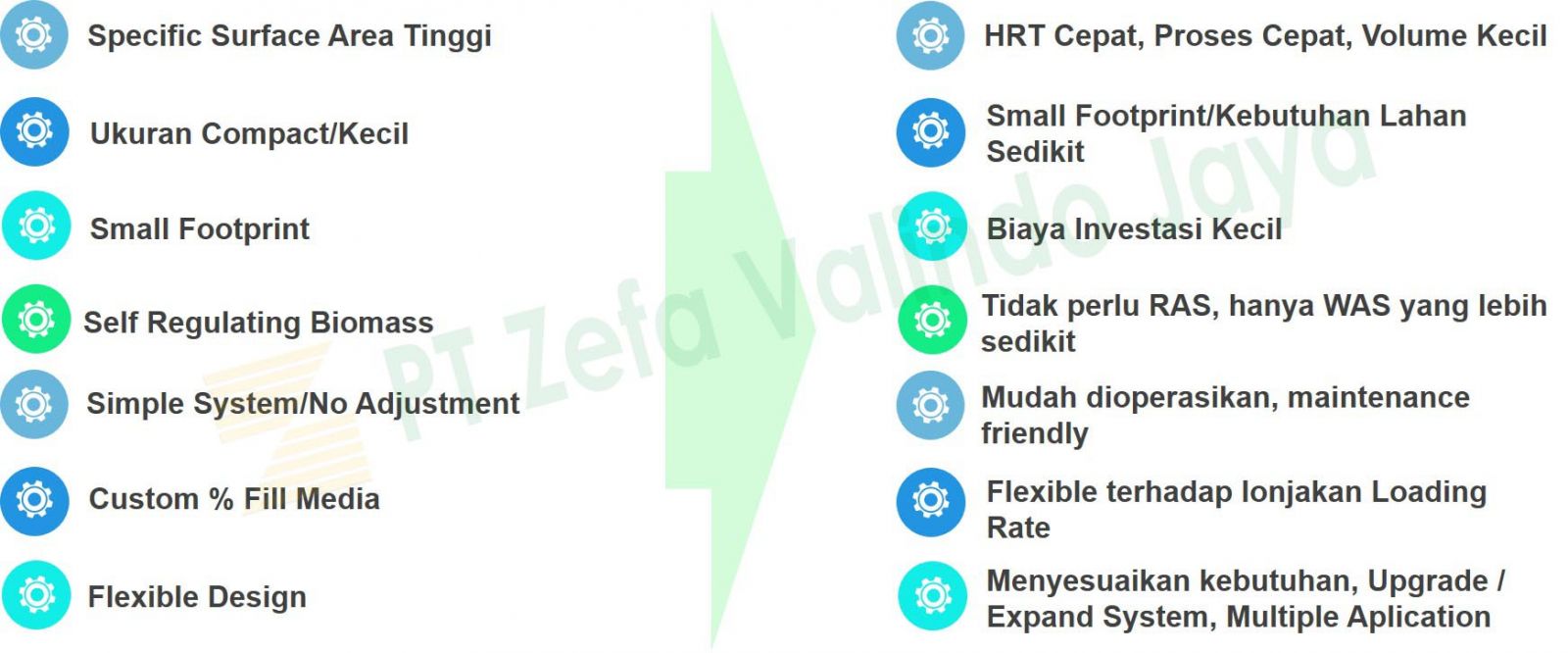
APLIKASI MBBR
- Municipal
- POME
- Industrial
- Food and Beverage
- Textile
- Chemical Manufacture
- Pharmaceuticals
- Meat Processing
- Pulp and Paper
- Petrochemical
- Plastic
- Etc
- Expand System/Upgrading
Supply Sistem Lengkap



